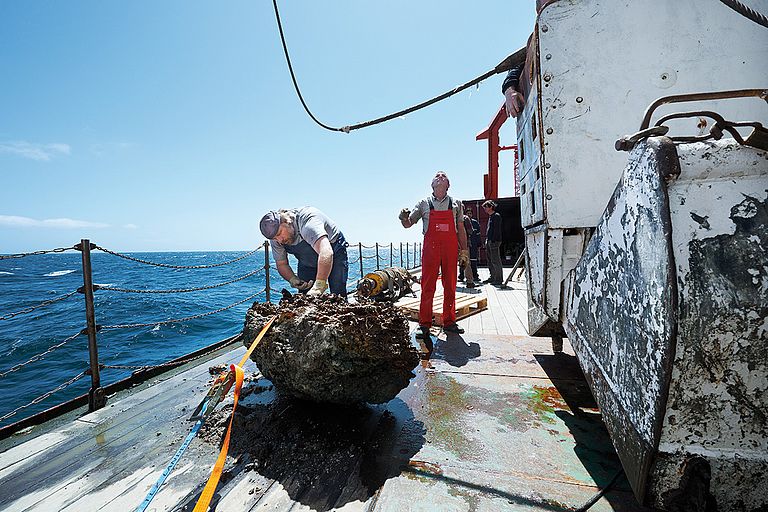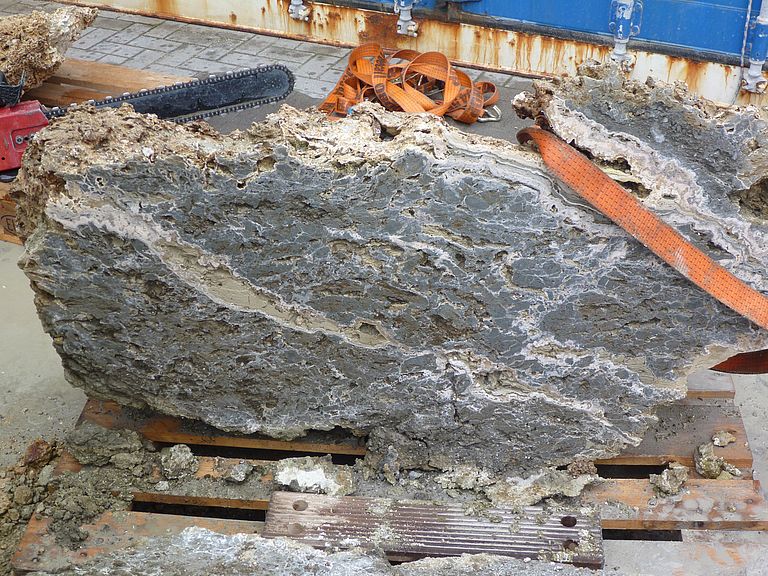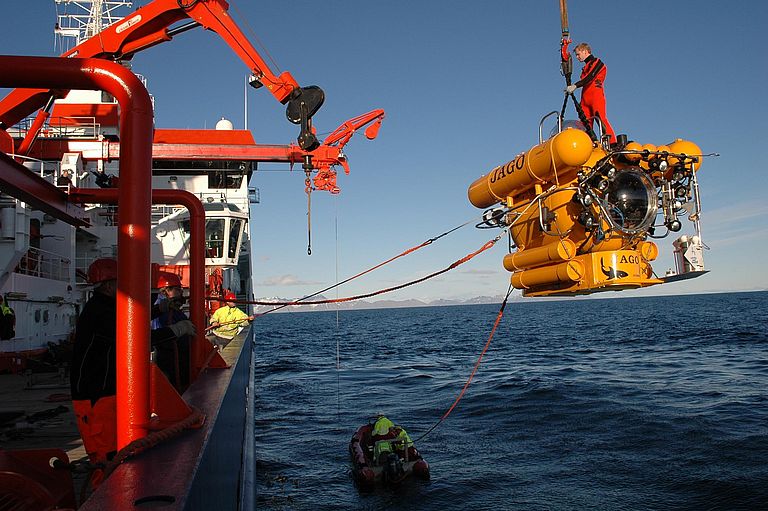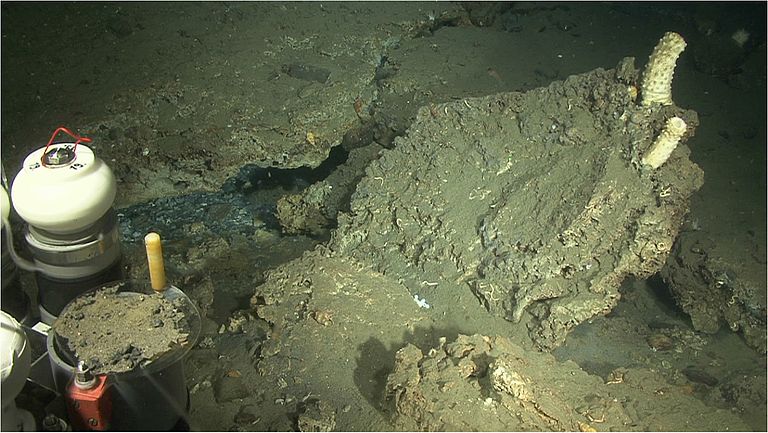Image of the month: April 2014
Recovery of Carbonate Rocks in the Pacific
During an expedition with the research vessel SONNE off the coast of Chile, GEOMAR scientists have recovered a massive carbonate rock from the seabed by using the video-guided deep-sea grabto the right of the image that can lift loads up to 2.5 tons from the sea floor.
Carbonates are important archives to reconstruct former deposits of methane and methane hydrates in the ocean floor. Where methane exits the sea floor, methane-converting microorganisms change the chemistry of the water. This leads to the precipitation of calcium carbonate which is deposited on the seabed. Some of the carbonate hills are hundreds of thousands to millions of years old.
Upon closer analysis, the carbonate rocks can reveal much about when and how much methane has entered the sea water from the sea floor, and how these processes were related to temperature and sea-level fluctuations. This knowledge can also help us in assessing the current processes on our planet.
Methane and methane hydrates - what are they? Methane is a colorless, odorless and flammable gas. It belongs to the group of the hydrocarbons and is the main component of natural gas. And methane is - somewhat simplified – methane-containing ice. Or more precisely, solidified water whose molecules take on crystalline shapes - similar to ordinary ice. However, in methane hydrates, the water molecules form actual cages which trap additional methane molecules. To the human eye, methane hydrate still looks like regular ice. But watch out when it melts: Because the escaping methane is indeed very similar to the regular natural gas, it is readily flammable. It has clearly earned its "burning ice" moniker.
Huge amounts of this methane hydrate are stored in all continental slopes around the globe. Many countries have an interest in the enclosed methane as an energy source. At the same time, there are fears that the methane hydrates might become unstable with increasing water temperatures and, as a result of climate change, large amounts of methane might be released into the sea water and in some cases into the atmosphere. This would accelerate the greenhouse effect because methane is a significantly more effective greenhouse gas than carbon dioxide. Depending on water depth, intensity and nature of such a release, however, as well as the sediment’s composition and structure, the conversion of the methane already takes place on the seabed and along the way through the water column. The impact on the environment and natural habitats there is also a topic of current research.
A look into the past and the development of hydrates and methane sources over millions of years, and in particular throughout the changing conditions of the last ice ages and warm periods, helps us to better categorize the current developments. For example, researchers from GEOMAR together with colleagues from Bremen and the UK, were able to demonstrate that the release of methane hydrates off Spitsbergen is not a result of climate change but part of an ongoing, long-lasting, periodic process. The evidence for this was found in carbonate deposits.
Links:
www.geomar.de/news/article/methanhydrate-und-klimaerwaermung/ Press release on methane hydrate releases off Spitsbergen
worldoceanreview.com/wor-3-uebersicht/methanhydrat/ Methane hydrate as an energy source
www.geomar.de/entdecken/artikel/article/methanhydrat-das-brennende-eis/ General information on gas hydrates (in German)
www.geomar.tv/gtv2-00/gtv2-01 Exploration of gas hydrates in the South China Sea






